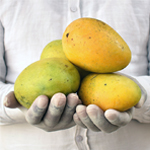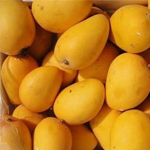Mango Farming : Obviously ! Because it is one of the fruits you like to eat most during the summer, you must have heard about it. Among all fruits, this is the king.
What is Mango Farming?
The mango fruit is considered a gesture of friendship in India, and it represents the love of our hearts. Among the leading commercial farming activities in India is mango farming. Known for its excellent flavour, fragrance, and delicious taste, mangoes are the king of fruits as a good source of vitamin A and C. Mango trees are also hardy, and they require little maintenance. As well as being a symbol of our love, mango is a fruit in which a gesture of friendship is considered in India. Because of its deliciousness and health benefits, it is the world’s favorite fruit.
There are many types of mangoes on the land, but mangoes are the most common. A mango tree (Mangifera indica), which belongs to the Anacardiaceae family of blooming plants, produces these tasty, sweet-smelling fruits.
An organic mango is naturally a drupe, or stone fruit, consisting of a central stone enclosing a single seed. Mangos are also called stone fruits, like plums, cherries, and peaches.
There are over 20 million tonnes of mango production in India, which makes it the largest mango producer in the world. There are several mango-producing states in India, including Andhra Pradesh, Uttar Pradesh, Karnataka, Bihar, Gujarat and Tamil Nadu.
Because of this, we are here to provide you with all the information you need about mango farming in India.
What Is Special About Mango?
Mangoes are healthy or not?
In addition to being low in calories, mangoes contain a high fibre content and are rich in vitamin A and C. In addition to iron, calcium, zinc, and vitamin E, mangoes contain a high fibre content.
Why is it Famous?
Fruits like mangoes are pulpy and juicy, and are known as kings of fruits. Each variety has its own taste, color, and size.
Here Are Some Benefits Of Eating Mango and Facts About Mangoes.
Your fondness for mangoes will be enlarged after you discover the many benefits of mangoes. There are so many health benefits to this food, in addition to its taste. These are some reasons why you should eat mangoes during summer and some nutrition information about mangoes. The nutrition of mangoes can be found in the following facts
- It holds low calories and high in nutrients, mainly vitamin C in mangoes.
- Rich in antioxidants.
- It helps to increase immunity.
- Give support to heart health.
- Improves digestive system.
- Supports our vision system.
- Improves hair fall and makes skin healthy
History Of Mango Farming

There are many thousand years of history behind mangoes, which originated in India. In ancient times, it was regarded as a sacred fruit.
Mangoes have their native land to south Asia, from where the name “Common Mango” or “Indian Mango”. Mango becomes one of the most broadly cultivated fruits in the world. It is a national fruit of India and Pakistan.
The mythology of mangoes is rich with stories. Many great Indian poets and kings have praised mangoes, including Kalidasa.
The cultivation of mangoes

The best soil for mango farming is deep, sandy loam, but black cotton, alkaline soil should be avoided or ignored. It is recommended that the soil pH of mango cultivation be between 5.5 and 7.5.
A rainy area should plant it in July-August and irrigate it in February-March.
It is also important for this farming process to be carried out at a temperature between 22°C and 27°C in order to achieve optimum results. Mango cultivation is best suited to a rainfall of 50-80 mm. It is recommended that you sow seeds between 20°C and 22°C when the temperature is between these two levels. Apart from this, mangoes should be harvested at a temperature between 28 °C and 30 °C.
The land should be ploughed and crossed ploughed, then leveled. In addition, don’t allow water to be stored in the field. The field should be divided into blocks after one deeper plowing is completed.
- How to plant?
- Plant the sticks to join plants with other plants at the centre of the dig along with the soil.
- The joining of plants should be made 15cm above ground level.
- Then they must be irrigated instantly after planting.
- They need support to make them grow straight.
Irrigation For Mango Plant
Water young mango plants frequently for good growth. During the maturation period between fruit set and maturity, irrigate the plants at 10-15 day intervals to improve yields.
Harvesting Of Mango
A mango is generally harvested when it is physically ripe and has ripened to its optimum quality. Harvesting machines or hand picking are both options for picking fruits. The fruit appears shabby during storage due to the release of latex during harvesting.
Interesting Facts About Mangoes

- We all are well known about mangoes. But you have heard about these interesting facts which we are mentioning below.
- Can you guess how many mango varieties there are in the whole world? You will be shocked after knowing this, there are 500 mango fruit varieties.
- Not only in India but it is a national fruit of 3 countries.
- Mango is the most lovable fruit in the whole world because people eat mango more than any other fruit.
- Did you know, Bangladesh declared Mango Tree as its National Tree.
The types of mangoes
When it comes to mouth-watering mangoes, nothing beats the summer season. Health benefits of mangoes have always played a vital role in Indian lives. There is always a queue of mango-lovers eager to explore and enjoy the benefits of different varieties of the king of fruits, mangoes. Mangoes have a good and healthy nutritional value. So why wait? Let’s go explore.
1. Alphonso Mangoes ( Hapus Aam ) – Ratnagiri, Maharashtra

Mid-July is the best time to purchase Alphonsos. Internationally, they are loved for their sunny yellow appearances, aromatic flavors, and tempting tastes. Hapus Aam is the name given to it. Known for its alphonso mangoes, Maharashtra and its neighbouring regions such as Ratnagiri belong to the most exclusive mango-loving areas.
2. Kesar Mangoes – Junagadh, Gujarat

The saffron-colored kesar mango is renowned for its delightful taste and saffron appearance. The Girnar Hills of Junagarh are known for their different sweet flavour, and it is considered the “Queen of Mangoes”. Kesar mangoes are famous in Gujarat and its neighbouring regions. During May and July, it is available, and it is considered an exotic and amazing ingredient.
3. Dasheri Mangoes – Lucknow and Malihabad, Uttar Pradesh

Dasheri mangoes are known as royal mangoes and are very popular in Lucknow, the land of the Nawabs. The mango chain of North India is widely known in this town. From mid-May to late August, they are available. There are different varieties of dasheri mangoes in India, and these mangoes are known for their wholesome taste.
4. Safeda Mangoes – Andhra Pradesh

Safeda or Benishan Mangos are popular in several areas of Andhra Pradesh, particularly in Banganpalle town. It is also called ‘The King of Mangoes in South India’. Other varieties of mangoes, which are typically sold mid-season, are significantly smaller than this variety. The average weight of the fruit is 350 to 400 grams. This mango has a thin and subtle skin that tastes sweet. As well as being healthy, Safeda Mango is rich in Vitamin A and C.
5. Langra Mangoes – Varanasi, Uttar Pradesh

One of the most famous Langra Mango varieties is the Langra variety. Mangoes from this region are easily narrated by their natives as stories about farmers cultivating these mangoes. The lemon-yellow skin and delicious taste of Banarasi Langra mangoes make them very popular between June and July.
So, these are the types of mangoes even there are so many more to explore.
Uses Of Mangoes

Apparently, mango lovers always look forward to mango season, because mangoes can be used for so many things. We’ve compiled a few mango recipes for you.
-
Mango Kulfi

This recipe is quick and easy and contains sweetened milk, cream, and our favorite mangoes.
-
Aamras recipe

This is one of India’s favorite sweet dishes and it is easy to prepare. Aamras are generally made with alphonso mangoes.
-
Mango Icecream

Mango Icecream Creamy, softy and yummy mango ice cream can be make with only 3 ingredients: mango, fresh cream, honey, or sugar.
-
Mango Shrikhand
-

A very popular sweet dish based on common yoghurt, which is made with ripe mangoes.
-
Mango Papad ( Aam Papad )

A very easy and yummy 3 ingredient recipe that sweet and tangy in taste. It comes in uncountable categories in all over India with different shape, taste, appearances and qualities.
- This infographic is about the types of mangoes in India with complete information.
- It includes Price, Region, Maturity Time and Availability of the types of mangoes.
- The types of mangoes list Alfonso Mangoes, Kesari Mangoes, Dasheri Mangoes, Safeda Mangoes, and Langra Mangoes.
These are the types of mangoes, and we hope you get all the relevant information about mango farming and their uses. For more information about mangoes and for other data in India, please visit Aarug Agro, where you can get detailed information about mango farming, technologies and many others.



[…] Read More : Mango Farming in India: Types & Benefits […]